Posted by Dorine King on September 19th, 2017 in Aromatherapy, Holidays
9 Essential Oils for Fall and Autumn Equinox
Essential Oils for the Fall and Autumn Equinox
What are your favorite essential oils for Fall and Autumn Equinox?
This year the Autumn Equinox, also known as Mabon, is on September 22, 2017 at 3:02 PM Central Time and is celebrated in many cultures. At our house, we celebrate Mabon, the second harvest and the start of winter preparations, such as finishing up the canning and freezing and putting the garden to bed. It is a time to respect the impending change of the seasons, and the return of darkness and giving thanks for the sunlight, enjoy the earlier twilight and cooler evenings. It’s time to complete projects a time to reap what we have sown.
One of the ways of reaping what I have sown, is putting my aromatherapy knowledge to work for my family and readying our medicine cabinet for winter. One of the tools in my medicine chest is an array of essential oils.
These 9 Essential Oils for Fall and the Autumn Equinox are some of my all-time favorites! They remind me that cooler weather is coming and it’s time to start warming up the house with the aroma of spices.
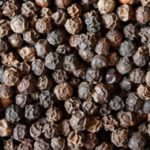
Black Pepper (Piper nigrum)
- A perennial woody vine with heart shaped leaves and small white flowers. The berries turn red to black as they mature.
- The essential oil is made from the dried fully-grown unripe fruit
- Extracted by steam distillation
- So popular with the Romans that taxes were paid with it instead of coins. In medieval England, black pepper was used in charms and amulets for protection.
- Blends well with Bergamot, cypress, eucalyptus, ginger, and lavender among others
- Analgesic (relieves pain), antiseptic, antispasmodic, aphrodisiac, laxative
- It has a warming penetrating odor that is stimulating and strengthening to the nervous system. Black Pepper stimulates mental facilities and energizes the body. It is good for muscle aches and pains and is helpful in dispersing bruises
- Excessive use may over-stimulate the kidneys – use in moderation
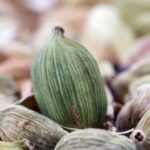
Cardamom (Elettaria cardamomum)
- A leafy stemmed shrub with purple-tipped yellow flowers
- The essential oil is made from the dried seeds
- Extracted by steam distillation
- It is good for digestion, antiseptic, antispasmodic, expectorant, stimulant, and tonic
- Blends well with Black Pepper, Eucalyptus, Fennel, and Ginger among others
- It is uplifting, refreshing, warms the senses and is ideal when there are feelings of weakness and fatigue. It stimulates the lungs, expels phlegm and helps east coughs
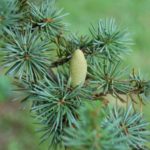
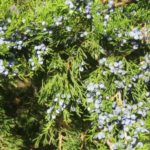
Cedarwood (Cedrus atlantica) (Juniperus virginiana)
- Both are evergreens growing 35-40 meters tall
- The essential oil is made from the wood
- Extraction by steam distillation
- Blends well with Bergamot, Cypress, Frankincense, Lavender, Sweet Orange and others
- Antiseptic, astringent, expectorant, sedative
- Cedrus atlantica is also good for skin and hair; Juniperus virginiana is best avoided during pregnancy
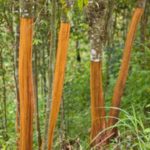
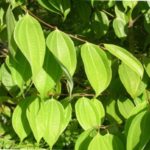
Cinnamon (Cinnamomum zeylanicum)
- A tropical evergreen tree
- The essential oil is made from either the bark or the leaf
- Extracted by water or steam distillation
- Blends well with Black Pepper, Clove, eucalyptus, ginger, lavender and Sweet Orange among others
- The bark essential oil has a sweet warm, spicy smell. Cinnamon leaf oil as a warm, spicy but rather harsh smell that lacks the body and depth of the bark oil.
- Analgesic (reduces pain), antiseptic, antispasmodic, insecticide, stimulant, tonic
- Excellent for exhaustion, depressing, debility and weakness
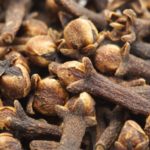
Clove (Eugenia caryophyllata)
- A slender evergreen which produces long buds with a rosy-pink corolla at the tip; as it fades it turns deep red. The calyxes are beaten from the tree and, when dried, provide the cloves we use in cooking.
- The essential oil is made from the bud, the stem and the leaf.
- Extracted by water distillation
- Blends well with Black Pepper, Cinnamon, Ginger, Lavender, Sweet Orange and others.
- Strong, spicy and penetrating
- Analgesic, antiseptic, antispasmodic
- Clove is positive and stimulating for the mind, lifts depression and is good to inhale when feeling weak and lethargic.
- Not used in skin care except to treat infectious wounds. Can cause skin irritation. The bud oil is safer than the leaf oil. If taken orally, is a hepatotoxin and an inhibitor of blood clotting
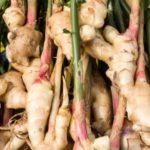
Ginger (Zingiber officinalis)
- A perennial herb with thick, spreading, tuberous roots, which are very pungent
- The essential oil is made from the root
- Extracted by steam distillation
- Blends well with Cedarwood, Black Pepper, Cinnamon, Clove, eucalyptus, Nutmeg, Sweet Orange and others.
- Spicy, sharp and warm
- Analgesic, antiseptic, antispasmodic, bactericidal, expectorant, stimulant, tonic
- Aids in digestion, good for treating nausea and travel sickness, useful for treating colds, coughs and sore throats. Helpful in clearing bruises
- May cause sensitization in some people
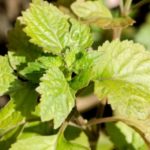
Patchouli (Pogostemon cablin)
- A perennial bushy herb with sturdy, hairy stem, large, fragrant, furry leaves with white flowers
- The essential oil is made from the dried leaves
- After drying the leaves in the sun they are steam distilled
- Blends well with Bergamot, Black Pepper, Clary Sage, Ginger, Lavender, Sandalwood, Ylang-Ylang and others
- Fragrance is strong, earthy and exotic.
- Great oil to use when dealing with anxiety and depression. It helps ground our energy and keeps us in touch with our physical self. Patchouli is a strong astringent with diuretic properties and useful in cases of fluid retention. It is deodorant.
- Used as a tissue regenerator, stimulating regrowth of skin cells. Assists healing of rough, cracked skin, sores and wounds. Good in treating acne, eczema, fungal infections and scalp disorders
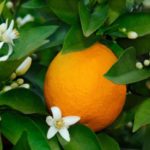
Sweet Orange (Citrus sinensis)
- An evergreen tree. The fruit has a sweet pulp and non-bitter membrane.
- The essential oil is made from the fresh ripe or almost ripe outer peel
- Extracted by cold pressing
- Blends well with Bergamot, Cinnamon, Clove, Lavender, Neroli, Nutmeg, and more
- It is zesty and refreshing
- Antidepressant, antiseptic, antispasmodic, digestive and lymphatic, sedative, stimulant
- Sweet Orange is cheerful, sensuous, conveys warmth and happiness. Help to relax and unwind.
- Sweet Orange has a normalizing effect on the intestines, and is recommended for constipation and diarrhea. It stimulates lymph fluids, which is helpful in treating swollen tissue. It is beneficial and soothing to dry, irritated and acne prone skin
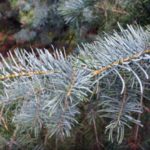
White Fir (Abis alba)
- A small coniferous tree with silvery white bark. Mainly grown for timber and Christmas Trees
- The essential oil is made from the needles and young twigs
- Extracted by steam distillation
- Blends well with Black Pepper, Cedarwood, Eucalyptus, Ginger, Lavender, Lemon, Peppermint and others.
- Has a rich, sweet balsamic odor.
- Analgesic, antiseptic, deodorant, expectorant, stimulant and tonic
- It is useful as an inhalation for anxiety and stress and useful for its grounding effect. It is ideal for respiratory issues. Itswarming effect is beneficial in massage blends for muscular aches and pains and arthritic conditions
How will you scent your Autumn Equinox? Comment below with your favorite Fall and Autumn Equinox essential oils.
** All photos in this post used with permission from www.stillpointaromatics.com










